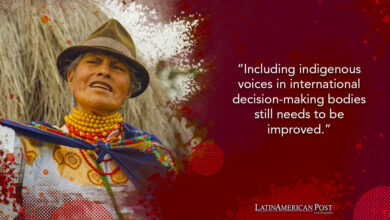Intermittent Fasting Risks: A Deeper Look into Latin American Diets

A recent study linking restricted eating windows to increased cardiovascular mortality sparks a vital conversation in Latin America, where dietary practices intertwine with cultural, economic, and health dynamics. This article explores the implications of such findings in the region’s diverse dietary landscape.
Intermittent Fasting and Cardiovascular Risk
Intermittent fasting, defined as limiting daily food intake to an 8-hour window and abstaining for the remaining 16, has become a popular health and weight management strategy globally. However, recent research involving more than 20,000 adults indicates that individuals adhering to an eating window of less than 8 hours face a 91% higher risk of cardiovascular mortality compared to those who eat for 12 to 16 hours. These findings, presented at the American Heart Association’s Epidemiology and Prevention of Lifestyle and Cardiometabolic Health 2024 Scientific Sessions, challenge the perceived benefits of intermittent fasting and necessitate a critical examination, especially within the Latin American dietary context.
In Latin America, dietary practices are deeply entrenched in cultural traditions, with the region facing escalating rates of obesity, cardiovascular diseases, and diabetes. The adoption of intermittent fasting in these societies, often viewed as a practical remedy for health issues, now calls for a cautious reassessment in light of these recent findings.
The dietary landscape in Latin America is marked by diversity, from Argentina and Uruguay’s meat-centric diets to Mexico and Central America’s reliance on corn and beans. Meal timing and composition significantly influence these eating habits, and intermittent fasting’s disruption of traditional meal patterns—typically involving three main meals and snacks throughout the day—may have unforeseen health implications.
The study’s revelation about the increased risk of cardiovascular death associated with restricted eating windows emphasizes the need for a comprehensive understanding of how diet impacts health, particularly in regions like Latin America, where lifestyle-related diseases are on the rise.
Economic Realities and Health
Economic factors play a crucial role in shaping dietary habits across Latin America. Financial constraints and food insecurity dictate meal frequency and quality in many areas, turning intermittent fasting from a health-conscious choice into a forced economic reality for some. This shift adds complexity to the study’s implications, suggesting that the health risks linked to limited eating periods could disproportionately impact economically disadvantaged populations.
Cultural considerations are paramount in Latin America, where food is a pivotal social and cultural cornerstone. Traditional eating schedules, often synchronized with social interactions and family gatherings, face disruption from adopting intermittent fasting, potentially eroding communal dining experiences and altering social norms.
The findings underscore the necessity for personalized dietary guidance, especially for individuals with existing health conditions like cardiovascular diseases or cancer. Given the varied access to healthcare and nutritional education in Latin America, promoting a one-size-fits-all diet trend like intermittent fasting could lead to unintended adverse health outcomes. Healthcare providers should tailor dietary advice to individual health profiles and the broader socioeconomic backdrop.
Call for Further Research
While the study provides valuable insights, it also highlights the need for further research to explore the intricate interplay of diet, health, and culture in Latin America. Future investigations should delve into the nutritional quality of diets, the socioeconomic status of participants, and the cultural influences on eating patterns. Moreover, addressing the study’s reliance on self-reported dietary data calls for more objective and detailed data collection methods to ensure accuracy and reliability.
The link between restricted eating periods and heightened cardiovascular risk necessitates a reevaluation of intermittent fasting, particularly in the Latin American context, where dietary habits are intertwined with cultural, economic, and health facets. Moving forward, it is imperative to adopt a holistic approach that integrates scientific evidence with cultural sensitivity and socioeconomic understanding, ensuring that dietary guidelines are health-promoting and culturally and economically viable.
Also read: Uruguay Hosts Global Grill Masters: A Culinary Festival Bridging Continents
In conclusion, the intersection of intermittent fasting with Latin America’s diverse dietary traditions and health challenges illuminates the region’s complex dynamics of nutrition, culture, and well-being. As we navigate these complexities, a nuanced and culturally aware perspective on diet and health becomes essential, paving the way for dietary practices that are both beneficial and respectful of Latin America’s rich cultural heritage.





